Anders Zorn was a remarkable Swedish painter known mostly for his nude female portraits painted with virtuoso brushwork and luminous colors. He is often referred to as the “Swedish Impressionist”.
In this post, I provide some of the key facts about his life and art, breakdown his style and technique and take a closer look at some of his stunning paintings.
- Key Facts
- Style and Technique Breakdown
- A Closer Look at Some of Anders Zorn’s Paintings
- Useful Resources
- Want to Learn More?
- Thanks for Reading!

Key Facts
- Zorn was born on 18 February 1860 in Sweden.
- He demonstrated a remarkable skill from an early age and gained attention for his depictions of horses and human figures which he carved in wood. He initially planned on being a sculptor, but ended up favoring painting.
- He studied at the Royal Swedish Academy of Arts from 1875 to 1880, but his attendance was poor and he later admitted that he did not have much to learn from the Academy.
- In 1880, Zorn exhibited his watercolor painting, In Mourning, which depicts a young girl under a veil. The painting is a sensitive display of colors and brushwork which paved the way for Zorn’s prolific career. He was praised for his skill by the public and critics, including leading Swedish critic Carl Nyholm who praised Zorn’s work in the Official Swedish Government Gazette.

- He went on to paint many of society’s leading figures, including King Oscar II of Sweden, Theodore Roosevelt, Grover Cleveland and William H. Taft.

- He is renowned for his depictions of nude female figures. With his soft edges and loose brushwork, the figures seem to dissolve into the surrounding environment.

- At the age of 29, he was made a Chevalier de la Légion d’honneur at the Exposition Universelle (a Legion of Honour at the Paris World Fair).
- He gained international success for his watercolors, oil paintings and also etchings. Below is an etching of him and his wife Emma which demonstrates a remarkable likeness with just light and dark tones.

- By his mid-20s, Zorn exuded self-confidence, claiming to have surpassed his predecessors and contemporaries.
“…I never spent much time thinking about others’ art. I felt that if I wanted to become something, then I had to go after nature with all my interest and energy, seek what I loved about it, and desire to steal its secret and beauty. I was entitled to become as great as anyone else, and in that branch of art so commanded by me, watercolour painting, I considered myself to have already surpassed all predecessors and contemporaries…” Anders Zorn (from Anders Zorn: Sweden’s Master Painter).
- In some of his paintings, he made use of an extremely limited palette which included just yellow ochre, ivory black, vermilion and white (the “Zorn palette“).
- He established the Bellman Prize in 1920, which is a prize for “an outstanding Swedish poet” awarded by the Swedish Academy. The prize was funded by the Emma and Anders Zorn’s Donation Fund Foundation.
- In his later years, he suffered blood poisoning and died on 22 August 1920, aged 60.

Style and Technique Breakdown
Zorn combined loose, virtuoso brushwork with skillful use of drawing, value and edges. His paintings appear incredibly realistic, yet they have a sense of effortlessness about them, similar to the paintings of Joaquín Sorolla and Sir Arthur Streeton.
The painting below has a very painterly feel to it. Here are some things to note:
- If you look up close, the strokes appear broad and general. But as a whole, it appears incredibly realistic.
- Notice how the edges around the subject’s main hand in the middle and his right arm are relatively soft compared to the rest of the painting. This suggests movement as the subject plays the violin.
- The dark parts of the subject dissolve into the background.
- The vivid red draws your attention towards the subjects head.

In relation to color, Zorn is renowned for his use of a limited palette of colors. His “Zorn palette” is taught in many of the top art schools to help students learn about color theory and mixing. However, it is a common misconception that he only used these colors. Many of his paintings suggest the use of other auxiliary colors. Either way, his paintings for the most part show a restrained and controlled use of color.
The painting below features a relatively limited palette of yellows, reds and oranges, but he was able to make those colors really “glow”. It just goes to show what is possible when you put the right colors in the right places.

Zorn’s compositions often appear natural and organic, with his subjects seemingly unaware of his presence, going about their day-to-day lives. He clearly had an eye for composition and painting in general. Many of his paintings break the standard “rules” of composition, but they still seem to work.

A Closer Look at Some of Anders Zorn’s Paintings
Park Alhambra, 1887
This is a delicate watercolor painting which features a couple sharing a kiss, a wondering cat and an unusual composition. The couple is tucked in the corner of the painting and there is a sense of calmness, unaware they are the subject of the painting. In terms of technique, it seems Zorn laid down general blocks of color then went over the top with the more intricate details (branches, flowers, highlights and accents).
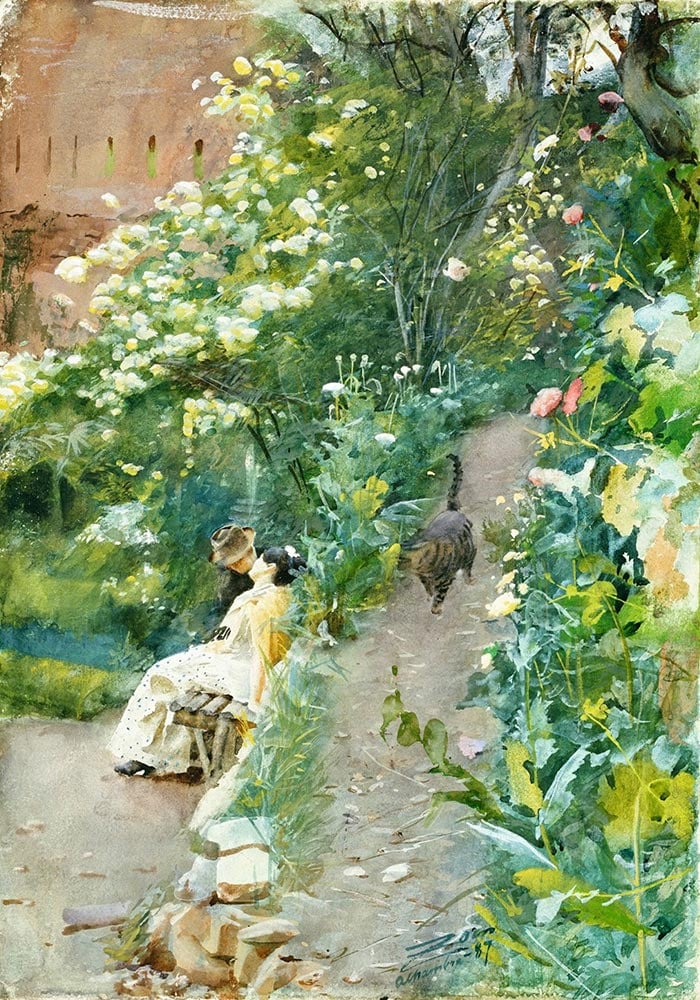
Our Daily Bread, 1886
Our Daily Bread is another intricate watercolor painting. The level of complexity shown in this painting led me to believe it was done in oils on first glance. Zorn clearly had a remarkable level of control and eye for detail. The painting features Zorn’s mother sitting at the edge of a path cooking potatoes for the harvesters. She appears to have a strained look on her face. Notice how your eyes are drawn towards the mother with the heightened level of contrast, color and detail compared to the rest of the painting.

Emma Zorn Reading, 1887
Here is a portrait of Zorn’s wife, Emma whilst she was reading. As with many of his portraits, the subject is just going about her life, seemingly unaware of Zorn’s presence. Much of the detail has been simplified; notice how he did not attempt to paint the words on the paper and how the wall in the background is nothing but general color shapes. There also seems to be a fish tank in the background with bright, orange goldfish. This contains your attention on the right side of the painting where the subject is also positioned.

Castles in the Air, 1885
This delicate watercolor painting features an unusual, upward look at the subject (Zorn’s wife, Emma) holding a Japanese parasol. The couple married in October 1885, so this may have been painted on their honeymoon. The light is shining through the parasol, bringing to life its decorations.

Nude Under a Fir, 1892
Here is one of Zorn’s many paintings featuring nude female figures in the landscape. The contrast between the lights and darks in this painting are quite stunning; you really get a feel of the bright light from the sun. The subject is painted with soft edges and she seems to blend in with the surrounding environment, rather than stand out from it.

Useful Resources
Books:
Sweden’s Master Painter by Johan Cederlund
Websites:
Wiki Arts – High-Resolution Photos of Anders Zorn’s Artworks
Want to Learn More?
You might be interested in my Painting Academy course. I’ll walk you through the time-tested fundamentals of painting. It’s perfect for absolute beginner to intermediate painters.
Thanks for Reading!
I appreciate you taking the time to read this post and I hope you found it helpful. Feel free to share it with friends.
Happy painting!
Dan Scott

Draw Paint Academy

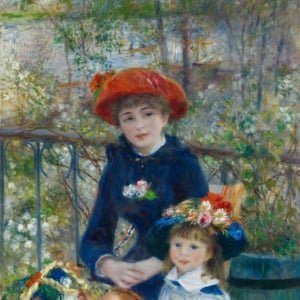
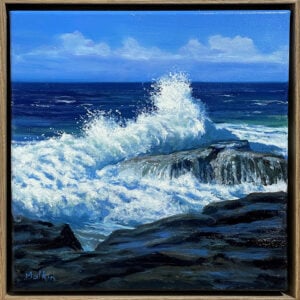
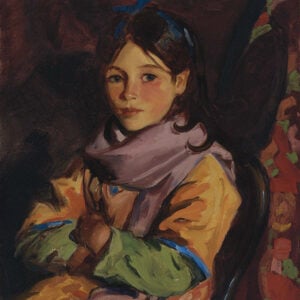
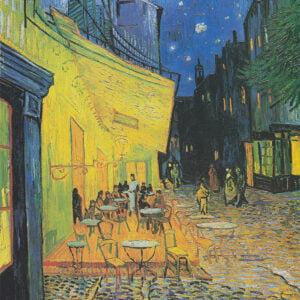
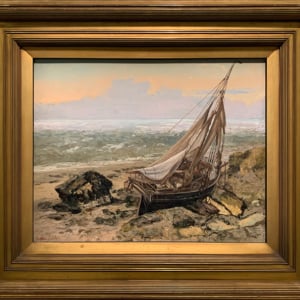
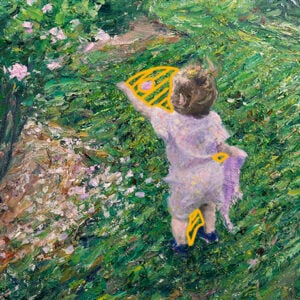
Dan,
I look forward to your informative and insightful articles. They are well researched and written making it easy for an art neophyte to appreciate the different style and techniques of master artists.
Thank you for your dedication to the arts.
Thanks Bill! Happy to hear this. Dan
Zorn painted whit Cremnitz white. Titanum white was unknown for artists at that time. He often used the camera to spare time and that is the reason for the limited pallet. Take a look at black and white reproductions of his work and you will see te connection.
Hi Hans, thanks yes you are right. I will update the post later. Cheers! Dan
By the way I’m Looking forewords fore your interesting pages.
Thank you. I’m very interested in this limited palette. I’m even seriously considering going to Sweden to see his work. I didn’t know he worked so much in watercolor.
No problem Susan. Thanks, Dan
Awesome article. Thank you! I just took a weekend workshop using the Zorn palette. Amazed at what one can create with these limited colours. I will definitely incorporate the Zorn palette as part of my skill set.
Good idea Ramona. Thanks, Dan
Many thanks for sharing this! Learning about the best painters is exciting and inspiring.
Great to hear Carolyn. Thanks, Dan
Thank you so much for this interesting post. I learn so much from your emails.
Glad to hear Sherry! Happy to help. Thanks, Dan
Dan, I’m so happy to have found you. You are a great teacher! Thanks for showing Zorn’s work, including his unbelievable watercolors–it is a joy to see his paintings.
Thank you Pam! Glad you enjoyed the post. Dan
Your posts are like taking an Art History course, but far more interesting! Thanks for sharing
information about artists lives and their work. I look forward to seeing your name in my inbox.
Glad to hear this Cynthia! Dan
Thanks! Enjoying the articles. Love Zorn, and really enjoy working with a limited palette. Seeing his work in person at the National Academy was AMAZING!!! Breathtaking. Fun to read and thank you for doing the research and posting it.
I can only imagine Kristin! Thanks, Dan
How could you not be impressed or even in awe of this mans work ?
What can you do with so few colours ? Apparently heaps !!
This is a great post, Thanks Dan.
Completely agree David! The paintings are beautiful. Thanks, Dan
Dan, Thank you for all of your insight and sharing. I hang on your every word and have
learned so much from your views and descriptions of each artist and their paintings.
Your paintings are wonderful as well. I am left handed as are you… do we tend to create
brush strokes with a different angle than a typical right hander???
Thank you again Dan.
Thanks Penny! It is possible that we do. My handwriting is shocking, which I blame on being left-handed. So maybe it has an impact on painting? Who knows!
Dan
Helló Dan !
Köszönöm , hogy olvashatom az oldalt!
Nagyon hasznos ,és tetszik nekem.
Zorn palettát magam is használom néha portrékhoz.
Jó munkát neked !
Hi There.
I will translate for everyone else reading:
“Hello Dan!
Thank you for reading this page!
Very useful and I like it.
I use the Zorn palette myself sometimes for portraits.
Good job for you!”
That is great to hear! Keep up the good work.
Thanks, Dan
Thank you for explaining so well. Had the opportunity to visit his museum in Dalarna Sweden and that was a lovely experience. (Also went and saw his contemporary Carl Larsson nearby)
Interesting to see the settings and subjects Zorn chose to paint. His limited palette majes me want to explore more of hus work. Thank you for sharing your Art Stirues! I really enjoy them.
Thank for introducing Zorn. His watercolours are amazing and I shall use his limited palet in my next efforts. Your contributions to art are remarkable. Do you ever sleep?
Dan this is another of your brilliant introduction of celebres painters. Thank you for your insights and sharing.
I really appreciate you bringing painters that I’ve never heard of to my attention. Love all the information you provide as well as the examples of their paintings. I’m enjoying expanding my knowledge of impressionistic painters.
This was so inspirational and amazing! Thank you for giving us all this information, Zorn was incredibly talented, so we can learn from his efforts. His watercolours are in another dimension!! Always appreciate your lessons, thank you.
So happy to learn of an artist I had not previously known. His compositions seemed quite photographic- a snapshot- so I did further research and he did use photos a references, such as they were in his day… not that there’s anything wrong with that.